You signed up for a gym membership, all pumped up and ready to become a new you but after a day or two of your new exercise routine, your muscles feel exhausted, sore and achy and you wonder if you can continue with the new routine. Sounds familiar? Don’t worry; we all go through this experience. Your muscles are sore after a workout because you’ve pushed yourself hard enough to create microscopic tears in your muscle fibers, known as delayed onset muscle soreness (DOMS). This type of muscle soreness can occur when you increase the intensity, frequency, or duration of your workouts or when you try a new activity. While it can be uncomfortable and frustrating, it is also a normal part of the muscle-building and recovery process.
Muscle soreness after exercise is a common problem, luckily, there are a few ways to manage and alleviate the discomfort. This blog explores some strategies for dealing with muscle soreness and minimizing its severity.
Tips To Relieve Muscle Soreness
1. Warm up Before Exercise
Before engaging in any intense physical activity, it’s crucial to take 10-15 minutes to stretch and warm-up your muscles. A good warm-up routine should include static stretching exercises for flexibility like Hamstring stretch, Quad and Tricep stretch, followed by light aerobic activities such as jogging or brisk walking. Doing so increases blood flow to muscles and warms them up to prevent muscle pain and strain. Additionally, warming up is especially important if you’re training in a cold environment as cold muscles are more prone to injury.
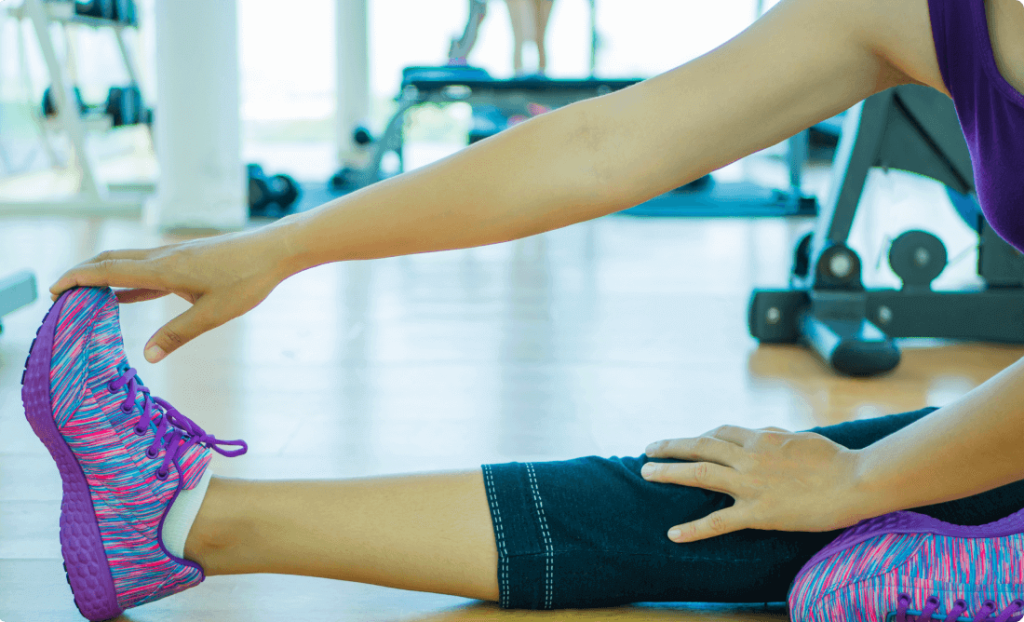
2. Use Proper Form
Incorrect form during an exercise can put unnecessary strain on your muscles and increases the risk of muscle soreness. Make sure to use proper form and technique, and if you are unsure, seek the guidance of a trained professional. Consider these three things when seeking proper form: alignment, range of motion and tension. Here are a few basic principles of good form during lifting weights:
- Throughout each lift, keep your abs tight and your back straight. This supports the spine, prevents injury, and targets the appropriate muscle groups.
- Each repetition should be performed slowly and in a controlled manner, both during the lifting and lowering phases. Doing so helps prevent the use of momentum and keeps control of the weight, avoiding any risk of pulling or straining a muscle.
- It is important to lift weights that you are able to control for the desired number of repetitions without pushing beyond your current abilities. Attempting to lift too much too soon can cause more harm than good.
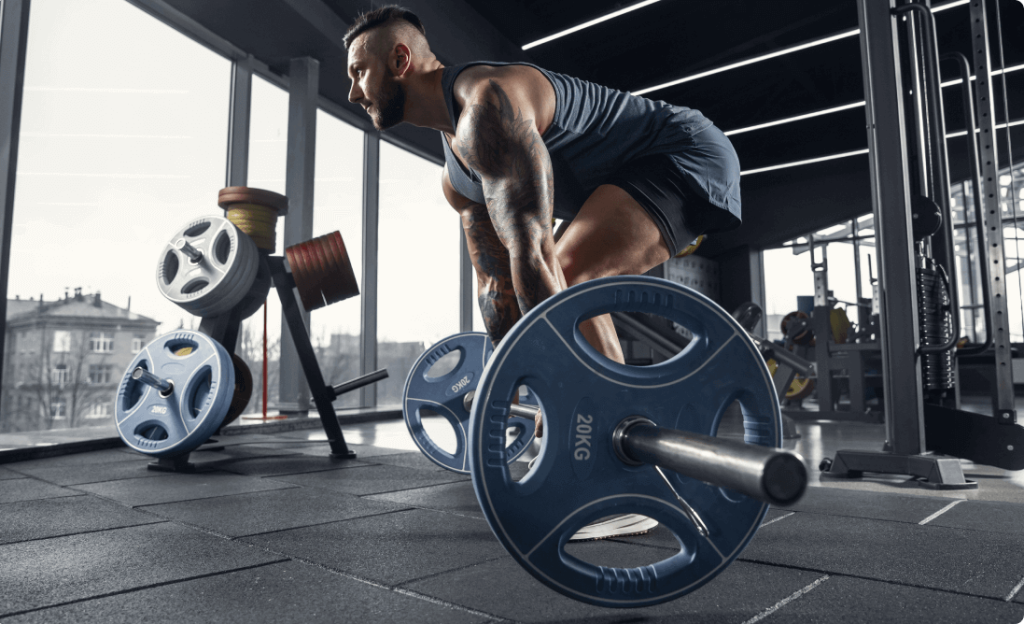
3. Gradually Increase Intensity
It’s important to remember that your muscles need time to adapt to new or increased physical activity. When you start a new exercise routine or suddenly increase the intensity of your workouts, your muscles may not be ready for the increased demand. This leads to muscle soreness, which is uncomfortable and even inhibits your ability to continue exercising.
The key is to start slowly and build up gradually. For example, if you are new to running, start with short distances and gradually build up to longer runs over the course of a few weeks. If you are lifting weights, start with lighter weights and gradually increase the amount of weight you are lifting as your muscles become stronger.
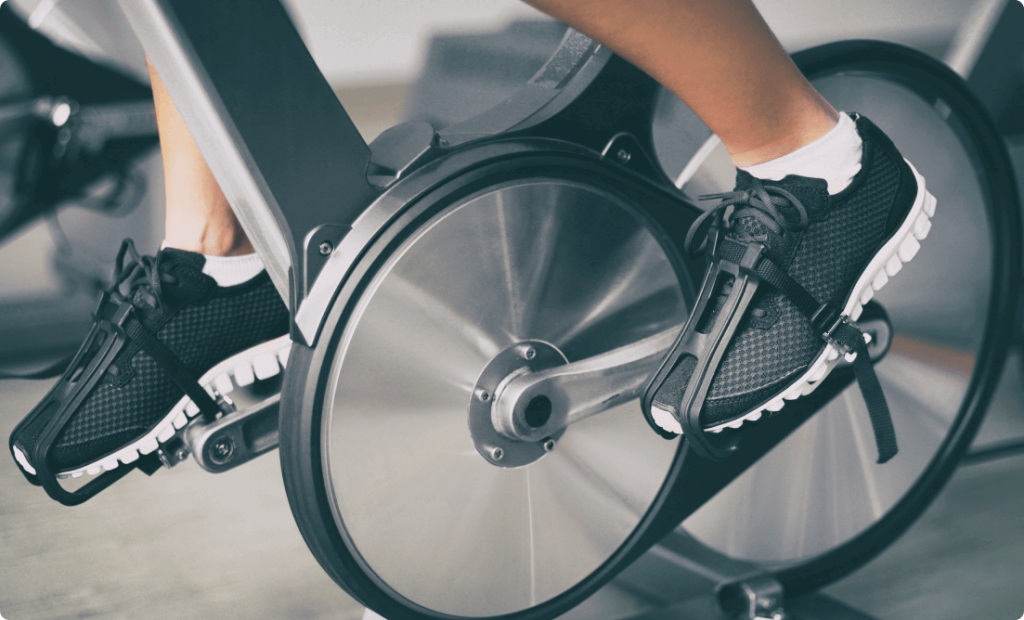
4. Cool Down After Exercise:
Cooling down after an exercise is an important step in the recovery process. A cool-down typically involves a period of low-intensity activity, such as walking or gentle stretching, that helps to gradually decrease your heart rate and allow your body to return to a resting state. In addition, Cooling down improves circulation and flushes out lactic acid (a byproduct of muscle metabolism) that contributes to muscle soreness and stiffness.
Whether you are just starting a new exercise routine or you are an experienced athlete, don’t skip the cool down as it is a crucial part of any workout and helps to keep you feeling your best and ready to tackle your next workout.
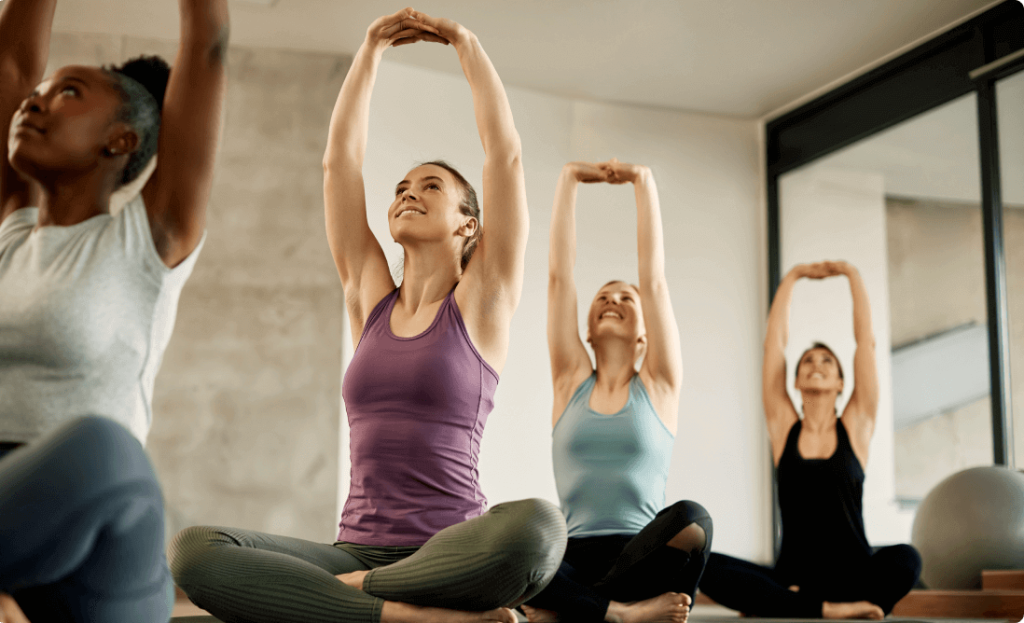
5. Use Foam Rolling or a Massage:
Muscle soreness from exercise can be effectively avoided by using a foam roller or getting a massage. Both techniques can help to improve circulation, reduce muscle strain and stiffness, and promote muscle recovery.
Foam Rolling, also known as self-myofascial release, is a type of self-massage that involves using a foam roller to apply pressure to specific muscle groups. The pressure helps release tension and break up knots in the muscles, reducing muscle soreness and improving flexibility. To begin, use a foam roller on each muscle group for 30 seconds to alleviate soreness. It is expected to be uncomfortable, but it should not be extremely painful.
Massages, whether they are given by a professional masseuse, a massage therapist or through the use of a massage gun, provide a feeling of instant relief and helps ease tenderness and pain. It also increases blood flow to the area and promotes the elimination of pooled fluid, which accelerates recovery. Massages can be beneficial if you are experiencing severe muscle soreness or if you have a specific muscle group that is feeling particularly tight or sore.
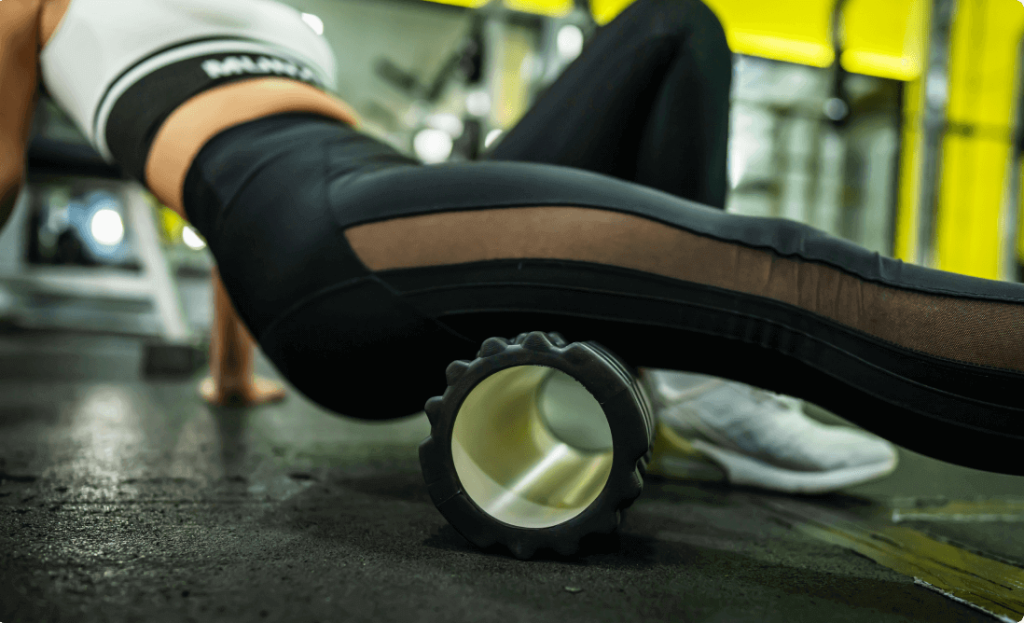
6. Get Enough Rest
Adequate rest and recovery are crucial for reducing muscle soreness. When you exercise, your muscles are stressed, and tiny tears occur. Sufficient rest and sleep allow your body to repair those tears, grow new muscle fibers, and recover strength. Getting enough sleep is especially important because your body produces growth hormones during sleep, which is crucial for muscle recovery. Studies have shown that individuals who get adequate sleep tend to recover from workouts more quickly and suffer less muscle soreness than those who don’t. Aim for at least 8 hours of sleep per night, and consider adding in an active recovery day or two to your workout routine.

7. Use Over-the-Counter Pain Medication
If muscle soreness is particularly severe, over-the-counter pain medication like acetaminophen or ibuprofen can help to alleviate the discomfort. These medications reduce inflammation and relieve pain by blocking the production of prostaglandins, which contribute to inflammation and pain. However, it’s essential to note that OTC pain medications should be used with caution. It’s always a good idea to read and follow the instructions on the packaging and consult with a healthcare professional if you are unsure whether a certain medication is right for you.
While OTC can reduce muscle pain, but it is important to keep in mind that these medications are not a substitute for proper recovery and rest. You should not rely solely on them to reduce muscle soreness, and they should be used in conjunction with other recovery techniques such as stretching, foam rolling, and getting enough rest.
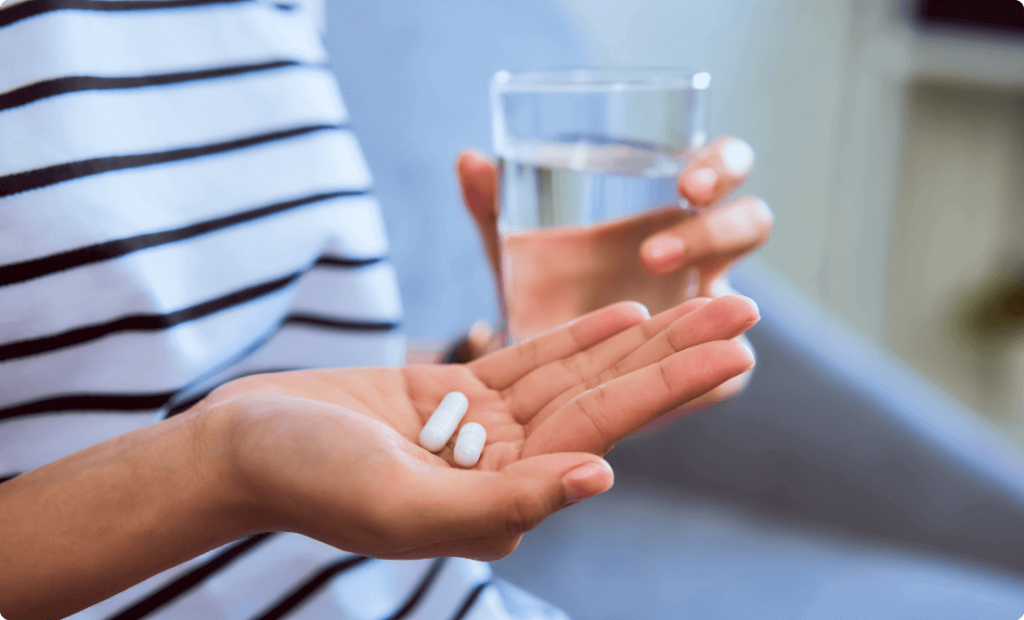
8. Stay Hydrated
Water is essential for maintaining body temperature, lubricating joints, and facilitating the transport of nutrients which help in creating energy. Lack of water intake can lead to several problems, such as muscle cramps, fatigue, dizziness, or even more severe symptoms.
Adequate fluid intake is necessary to flush out damaged muscles. A general guideline is to drink 8 ounces of water for every 15-30 minutes of exercise. Skipping this step can exacerbate soreness and prolong recovery time.
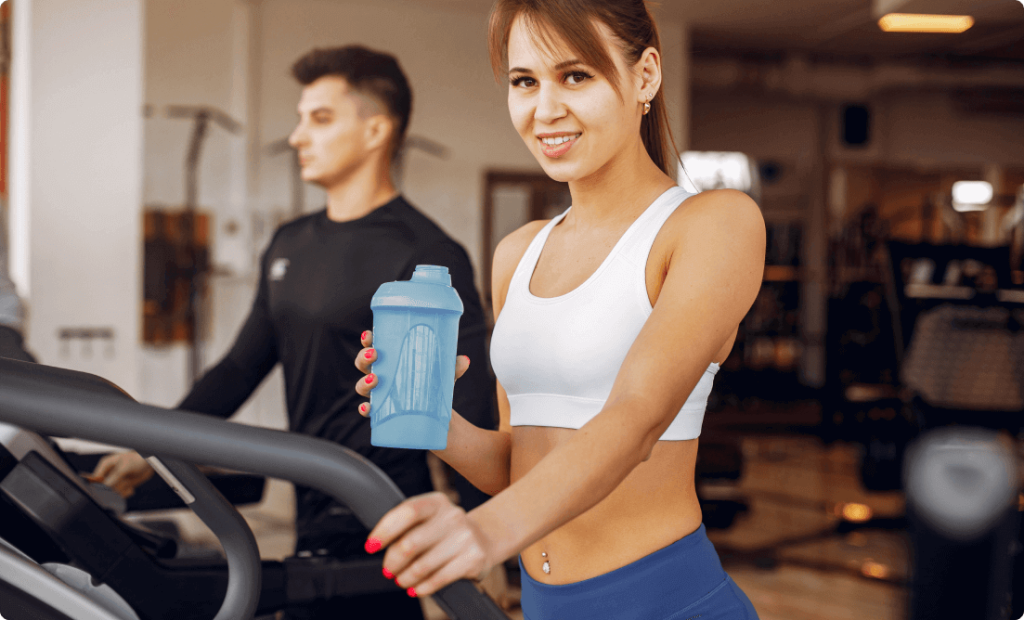
9. Eat a Healthy Diet
Consuming the right nutrients before and after exercise is vital for muscle repair and recovery. A balanced diet that includes carbohydrates, protein, healthy fats, fruits and vegetables provides the energy and essential nutrients your body needs to maintain good health and support muscle recovery and growth. Carbohydrates play a key role in boosting energy, while protein helps repair and rebuild muscle tissue.
Additionally, consuming enough antioxidants-rich fruits and vegetables helps reduce inflammation and muscle soreness post-exercise. Some of the anti-inflammatory foods that you can incorporate into your diet are berries, fatty fish, turmeric, ginger, and leafy greens.

Takeaways
Muscle soreness is a common result of exercise, but it doesn’t always mean that the workout was beneficial. The key is to work out at a level that challenges your body without overexerting yourself and being mindful of your current strength and abilities. Also, take care to fuel your body with water and nutritious foods, warm up and cool down before and after your workout, and provide your muscles with proper recovery methods like stretching, foam rolling, and massages. Remember that everyone’s body is different and requires unique care, so it is important to find what works best for you to get the most out of your workouts in the long run.
If you still have some questions or if you are looking for professional help to kickstart your fitness journey, we have the answers at Vision Sports Club. We have the right personnel, equipment and expertise to get you started and our certified personal training instructors are available to provide you with expert advice and guidance. Additionally, with our private coaching option, you can receive a customized training plan tailored to your specific goals and needs. So, Start your fitness journey today with the help of our experienced and certified team of personal trainers.


